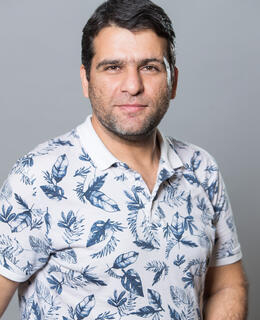
Dr. Mohammad Parvazdavani
Affiliations
Postdoctoral Associate
Faculty of Science, Department of Earth, Energy, and Environment
Contact information
Background
Credentials
Machine Learning and Visualization, University of Calgary, 2024
Educational Background
Ph.D. Reservoir Engineering, Amirkabir University of Technology, 2022
M.Sc Reservoir Engineering, Sharif University of Technology, 2012
Research
Areas of Research
My interests include history matching and optimization under uncertainty; laboratory- and field-scale simulation of enhanced oil recovery (EOR) processes; and experimental research focused on the characterization of petrophysical properties, such as relative permeability. I have a strong background in reactive flow simulation, particularly in water-based EOR methods like low-salinity water injection, using commercial software such as CMG. I am a member of EAGE and SPE, and currently serve as a reviewer for Elsevier journals, including JPSE and JNGSE.
Participation in university strategic initiatives
Projects
This study provides practical insights into the impact of model uncertainty and completion methods on the design and performance of various continuous injection and WAG EOR schemes in tight oil reservoirs. Wherever possible, customized laboratory data, such as relative permeability collected for low-permeability rock samples, have been utilized.
This study provides practical guidelines for achieving simultaneous hydrogen gas stream purification and CO2 storage in the deep Mannville coal in Alberta by applying HNP and flooding schemes using horizontal wells. Realistic constraints on the simulation model used to evaluate these schemes are provided through the application of existing field pilot data and laboratory results. The findings of this study will be important to operators considering this novel approach for purifying SMR gases using subsurface coal resources.
My research focuses on fault identification and seismic risk assessment using DFIT-FBA, with an emphasis on estimating the magnitude of induced seismicity in faulted reservoirs.
Publications
- Low salinity water flooding: Evaluating the effect of salinity on oil and water relative permeability curves using coupling of DLVO and geochemical reactions. Mohammad Parvazdavani, Mohammad Reza Khorsand Movaghar, S. Ali Mousavi Dehghani. Journal of Petroleum Science and Engineering. (2022)
- Prediction of electrostatic properties of reservoir rock in low salinity water injection into carbonate reservoirs. Mohammad Parvazdavani, Mohammad Reza Khorsand Movaghar. Journal of Scientific Reports. (2023)
- Evaluation of Simultaneous Hydrogen Gas Stream Purification and CO2 Storage in Deep Mannville Coal. Mohammad Parvazdavani, Hamidreza Hamdi, Christopher R. Clarkson, Michael S. Blinderman, and Curtis Evans. Unconventional Resources Technology Conference (URTeC) 2025, 9-11 June 2025. (2025)
- Evaluation of Continuous Fluid Injection and WAG Techniques for Enhanced Oil Recovery in a Tight Oil Reservoir in Alberta, Canada. M. Parvazdavani, H. Hamdi, A. Ghanizadeh, and C. R. Clarkson. SPE Canadian Energy Technology Conference and Exhibition, Calgary, Alberta, Canada, March 2025. (2025)
Are you the profile owner?
Login to edit.
